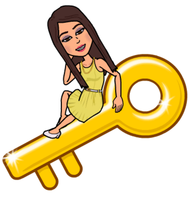|
As a leader in your building, it's important to keep current with all the best practices in education. Knowing what is new and cutting-edge in each content area is difficult yet crucial. As you walk into classrooms and observe teachers, students and the environment, how do you know that all students' needs are being met. ELLs are the fastest growing population in the United States. Are classrooms meeting the needs of their diverse students? Here's what to look for:  Cooperative Learning: Cooperative learning is defined as students working together, discussing, and learning from one another. These groups should be heterogeneous in an effort to support the needs of all the students in the group. Cooperative learning benefits all students but ELLs need it to become fluent in academic English. English Learners need to hear native speakers and practice English in an academic setting. Cooperative learning allows students to negotiate for meaning, process their thoughts, and build on background knowledge from other students. You will know if students are practicing cooperative learning when you walk into a classroom. If desks are in groups, it's probable (but not certain) that cooperative learning is taking place. Desks in isolation or rows are not conducive to cooperative learning. When cooperative learning is integrated into classroom culture, students feel free to take risks and the affective filter is lowered. The more opportunities for students to share their thoughts and ideas with one another the more comfortable they become discussing academic topics using the English language. Another great benefit of cooperative learning is that the students are doing most of the talking rather than a teacher doing a great deal of lecturing. We know that the one doing the work and the talking is the one doing the learning. Word walls with visuals: Word walls are all the rage! Lots of classrooms have them now a days. But that doesn't mean the word wall is actually being used by students or that it is effective. Classrooms that truly supports ELLs will have word walls that are content specific AND include visuals. For example there may be a separate word wall for science and math words. In addition each word will have a picture, graphic or realia (real object) by the word. Word walls may look messy because when they are authentic they are often added to and used spur of the moment when the need arises. Language rich classroom: This is a loaded one! Language rich can mean so much. For example, a classroom that is language-rich will have shelves bustling with books. Books of all sorts, levels and genres. Books that highlight and showcase cultures from around the world. So that any student can find them self in a book they pick up. A language-rich classroom will have anchor charts that are clear and concise. These anchor charts will not merely be wall paper. They will be functional for student use. Students will refer to them and when asked, students will know what the charts are used for and how to use them. The anchor charts will be supported with graphics and visuals. When the classroom has newcomer students, the classroom might even be labeled. All objects in the room will have a label: door, chair, computer, desk, wall, Smartboard, etc. Sentence stems/frames: In a classroom that clearly supports English learners, it will be easy to see if students are supported orally. There may be sentence stems or sentence frames posted on charts in the room. Or there may be stems posted on the board by the content or language objectives for the day. Some stems remain the same and are there for long periods of time while others change with the daily objectives. For example, generic stems such as "I agree because..." or "I think...because..." might stay up for a long time. Frames like, "One way the founding fathers were alike is...for example..." will only stay up during a short period of time. One way to see if students know how to use the stems and if explicit instruction has been given for the stems is to ask a couple students. Simply ask, "How do you use that chart?" or "How does that sentence stem help you?" If students have no idea then perhaps the chart or stems are wallpaper rather than a learning tool. Whether you are an instructional coach, an ESL coach, an assistant principal, or a principal, it's important to know what to look for as you visit classrooms. English Language Learners are diverse and have unique needs. If you aren't observing the things listed above in a classroom on your campus, it may raise a red flag. Talk to the teacher. See if your ESL department or ESL specialist can help. Perhaps professional development training or a book study will benefit the teacher. Unfortunately preservice teachers have very little ESL professional development or training. And a lot of the training current teachers have is on the job training. Be prepared to support teachers as they grow as learners themselves. Resources: Echevarría, J., Vogt, M., & Short, D. (2008). Making content comprehensible for English learners: the SIOP® model. Boston: Pearson/Allyn and Bacon. Brechtel, M. (2001). Bringing it all together: Language and Literacy in the multilingual classroom. San Diega, CA: Dominie Press.
Heather Gardner
8/28/2019 04:22:25 pm
Thank you for the infographics. They really take content heavy information and make it so user friendly, and also lighten the brain load on tired teachers at the end of the day. Comments are closed.
|
Categories
All
|



 RSS Feed
RSS Feed
